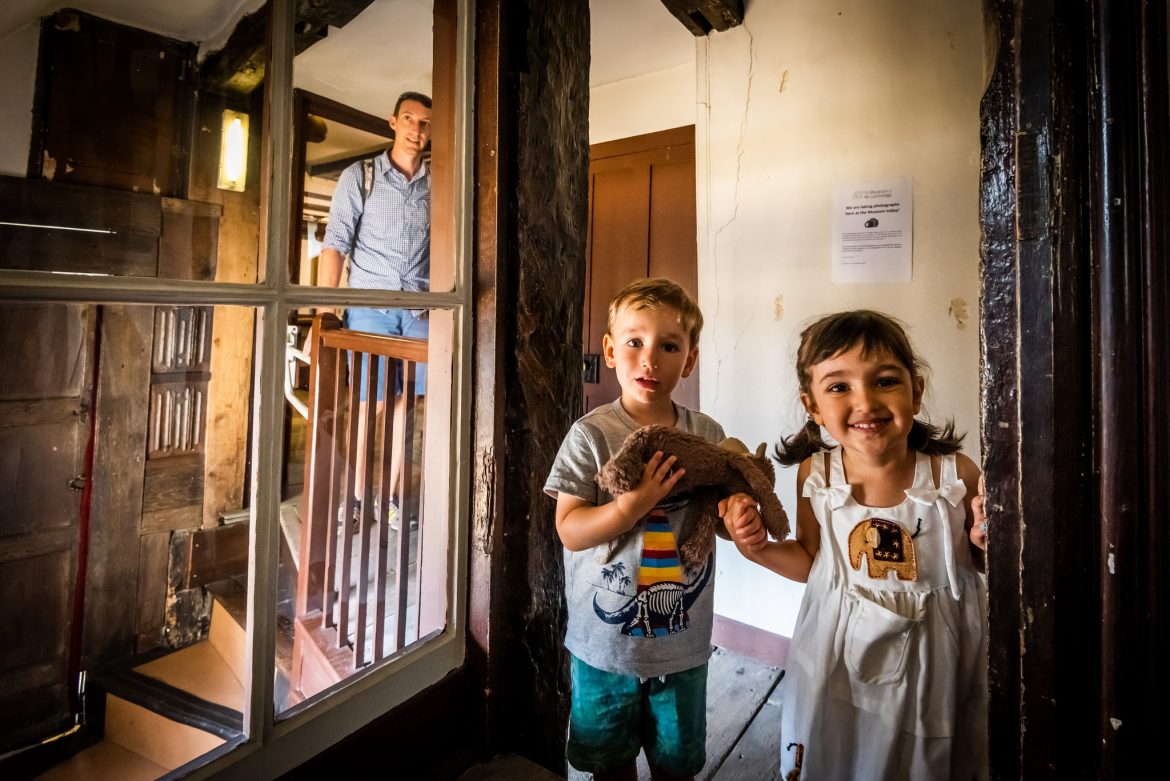This charming local museum is the place to be for a spot of regional reminiscing
Representing the history and heritage of Cambridge and Cambridgeshire over the past 400 years, the Museum of Cambridge showcases an impressive collection of artefacts that shed light on to the customs and traditions of our ancestors. This small, independent museum is steeped in local heritage – the richness of which is well worth a visit.
With its winding staircases and uneven floors, the 17th-century building’s eclectic history makes for some endearing interior design. Originally used by the townspeople of Cambridge as a domestic dwelling, it has served several purposes in its long history, resulting in an eccentric layout that gives the museum a distinctively quirky character. “The museum is as much the building as what’s inside,” explains museum officer Jan Wheeler. “It’s a wonder that it’s still standing. We’ve got a bit of the wall exposed and on display so visitors can see the original pine timber frames.”
The museum, the former White Horse Inn on Castle Street, is divided into nine atmospheric rooms, each displaying a selection of everyday objects from times gone by. The bar is particularly striking: “We’ve had visitors come in and say they half expected to be served a pint when they sat down,” laughs Lesley Whittaker, active volunteer at the museum. “People really feel like they’ve been transported back into the past when they walk in. It’s lovely to see multiple generations experience the museum. The kitchen always seems to get a great reaction; some of our older visitors are reminded of their childhood or their grandmother’s house. There’s a real sense of nostalgia about it.”
Among the assorted artefacts in the museum, there are stories of some remarkable local personalities. These include Elizabeth Woodcock, a farmer’s wife from Impington, who became trapped in deep snow for eight days, surviving on nothing but chestnuts and the brandy in her hip flask. “We have Elizabeth’s nutcrackers in the museum,” says Jan, “and even though she didn’t survive long after the snowdrift, her story is one of our favourites.” The guest room celebrates the many colourful characters who visited the pub over the years, ensuring they will be remembered for generations to come.
The museum’s collections are characterised by the work of its longest-serving curator, folklorist Enid Porter. Enid spent the best part of three decades curating the collections at the museum, gathering objects that have provided us with unique insight into the past. “Enid was amazing,” says Lesley, “she basically collected most of what we have in the museum today on her own, as well as running the place – she even lived on-site!” The museum’s Enid Porter Room pays homage to the integral role she played in the museum’s curation, celebrating her legacy and the countless stories and memories she recorded. By continuing to collect stories of change and development in Cambridge, the museum hopes to revive her ethos and ideas in order to preserve local heritage for future generations.
One project doing just that is Capturing Cambridge, a local initiative working in partnership with the museum to piece together the mosaic that makes up Cambridge’s intricate social heritage. Featuring stories from as far afield as North Yorkshire and Kent, the project aims to put local history on the map in and around Cambridge. You can have a look through some local stories and even contribute some of your own on the website: capturingcambridge.org
With the future of Cambridge folklore in mind, the museum is keen to get the younger generation interested in local heritage, offering plenty of events in the school holidays. “We’re planning lots of activities in the February half-term, so you can keep an eye out for those,” enthuses Lesley. “Our exhibitions are always changing, too. We don’t like to be stagnant.” Best of all, the £6 museum entry ticket doubles up as an annual pass, so you can come back as many times as you like. Children aged 12 and under are free when accompanied by an adult, or are otherwise eligible for a lower concessionary fee.
Now well on the way to its 90th birthday, the Museum of Cambridge continues to provide visitors with a sense of place and identity. Being independent, the museum survives on funds raised through admission charges, shop sales and fundraising – along with a few charitable donations – and receives no core funding. Many of its staff members are volunteers. “Currently we have around 70 or 80 volunteers, but we’re always encouraging more people to join us,” says Jan. If you’d like to get involved with volunteering, you can visit museumofcambridge.org.uk

